Cassia Seed-Borer Moths
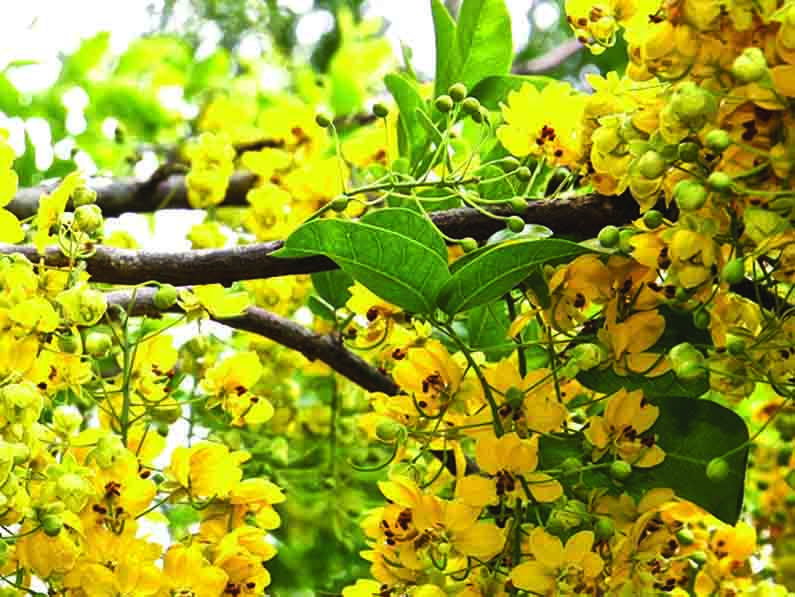
Author & Photos: Graham McDonald, Gold Coast Branch
Published: Journal June 2020
Introduction
For many years now a few of our members have been propagating native Cassias and Sennas from scarified seed. Cassia marksiana and Cassia tomentella are spectacular flowering trees from our local area (south east Queensland.). Cassia tomentella is more suited to smaller gardens and produces abundant racemes of yellow flowers in spring.
The long cylindrical cigar-shaped seed pods (15cm to 30cm by 1cm to 1.5cm) start to ripen in January. The hard brown-yellow seeds are flattened cylindrical and enclosed by a spongy coat. These are packed into the pod rather like a stack of pancakes. The problem of extracting these seeds is compounded by the fact that most of them have been eaten I decided to collect some of the caterpillars along with the opened seed pods and placed them in a breeding cage covered by flywire. Several weeks later a drab browngrey moth emerged. The moth was photographed. It had a wingspan of about 1.5cm.

Cassia marksiana
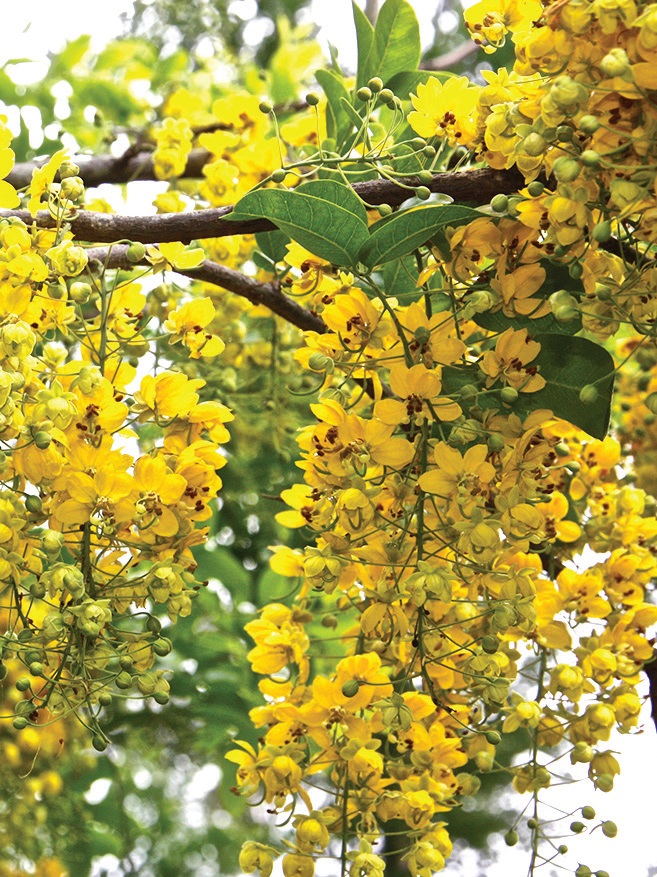
Cassia tomentella
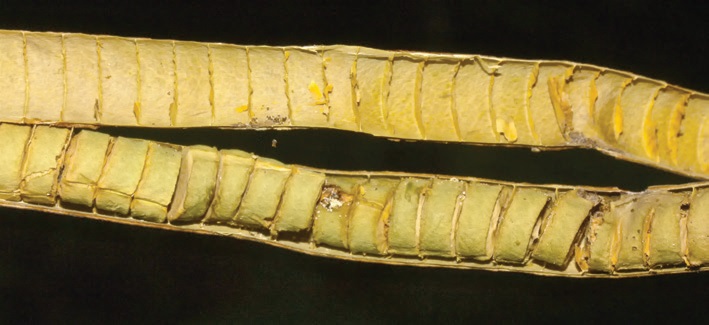
Cassia tomentella opened seed pod
Photos of the moth were sent to moth enthusiasts but none were able to assign a genus or species to the moth. This is not surprising as Australia has between 20,000 and 30,000 moth species. A large proportion of these have not been described. The closest identification that could be assigned to the moth was to the Family Pyralidae, Subfamily Phycitinae.
Family Pyralidae is one of the largest and megadiverse families of moths. Adults adopt many postures, biologies, and behaviours. They are distinguished from most other moths by having a scaled base to the proboscis, abdominal hearing organs, and prominent labial palps which protrude forward in front of the head.
The Subfamily Phycitinae contains moths that are typically concealed feeders, living in silken webs made up of leaf fragments. Many bore into trunks, stems, fruit, seed pods, and galls. The most famous Phycitinae is the cactus moth Cactoblastis cactorum which is responsible for the biological control of Prickly Pear in southern Queensland. It was introduced in the 1920s and is still controlling the pear. Its larvae feed in the fleshy green areoles reducing them to a pulp. Another moth in this Subfamily is Etiella behrii. It is widespread in Australia and also overseas. It is a pest of legumes, the larvae boring into the pods and seeds. The moth attacks peanuts, soybeans, peas, lupins and lucerne.
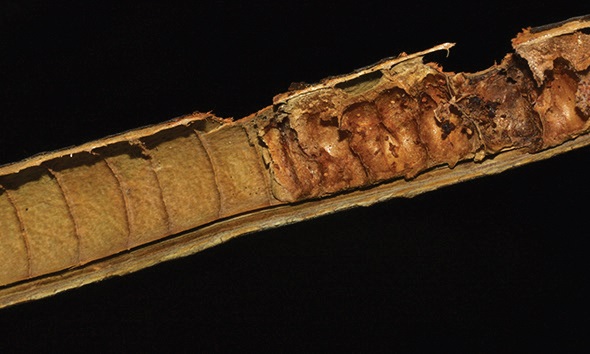
Cassia tomentella damaged seed pod
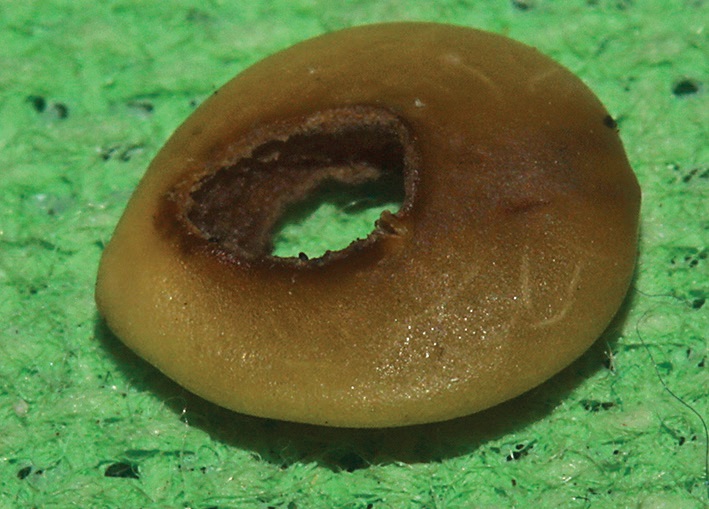
Cassia tomentella damaged seed
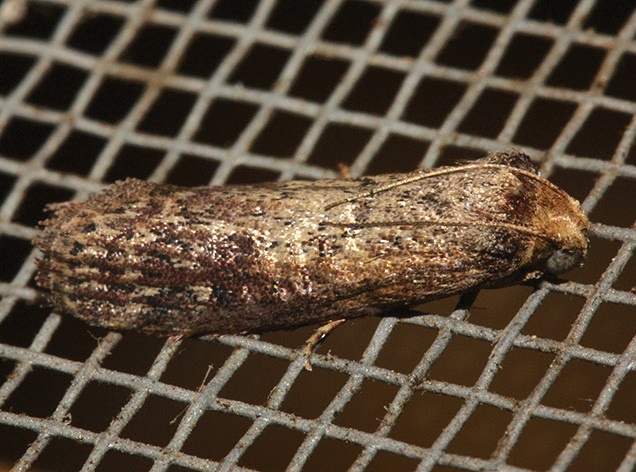
Cassia borer-moth
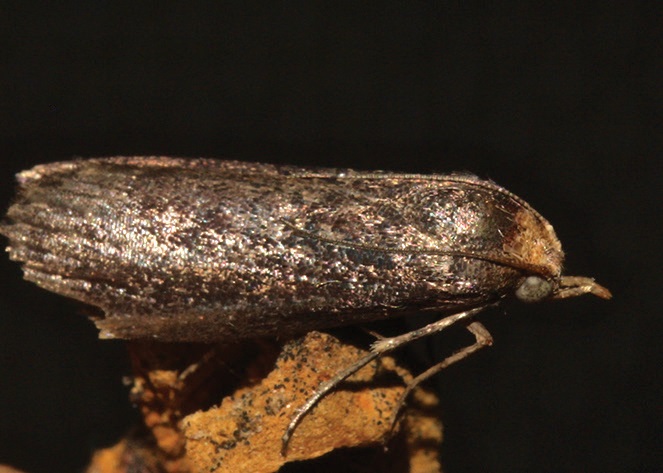
Cassia borer-moth
Other Cassia seed-borer moths
There may be more than one species of moth whose larvae bore into the green seed pods of Cassias. Another one has come to light on 26 January 2020 when Glenn Leiper observed and photographed another moth which emerged from a pupal case attached to a Cassia tomentella seedpod.
This moth belongs to another moth family (Tortricidae), and normally feeds in the green nuts of several Macadamia species. I have identified the moth as Cryptophlebia ombrodelta (Family Tortricidae).
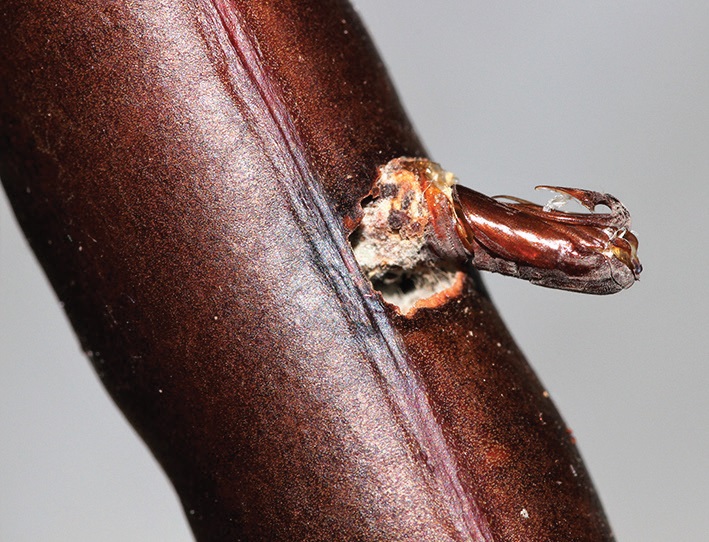
Macadamia nut-borer moth pupa case extruded from Cassia tomentella seed pod.
Photo Glenn Leiper
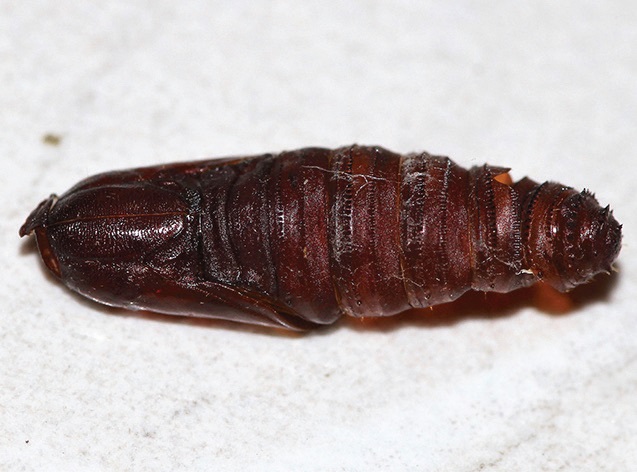
Macadamia nut-borer moth pupa case.
Photo Glenn Leiper
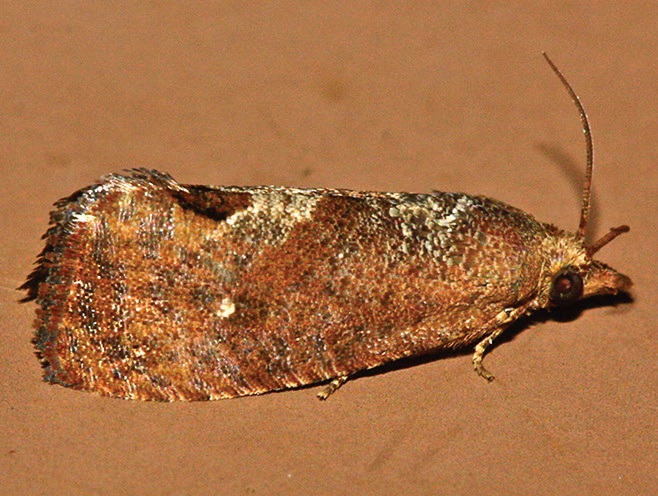
Cryptophlebia ombrodelta
Cassia seed-borer moth life cycle
The life cycle has not been fully described but ties in nicely with the life cycle of the Cassia trees. Adult moths are around from mid October to mid November. At this time the adult female must lay eggs on the seed pods. At this time, the pods would be small and soft as the tree flowers from late October to early November. Moth larvae would hatch and start feeding on the developing seeds, etc. The larvae grow to about 8mm to 10 mm long. Just before pupation I would assume that the larvae chew a hole around 2.5mm in diameter from inside the pod to the outside, and then pupate next to the hole. When the moth emerges I assume that the pupa forces its way halfway through the hole by moving its abdomen backward and forward. The moth then emerges and flies off.
Acknowledgment
Peter Hendry: Identifying the Cassia borer-moth
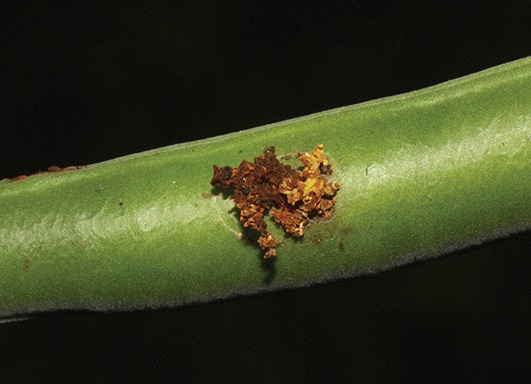
Borer hole Cassia seed pod
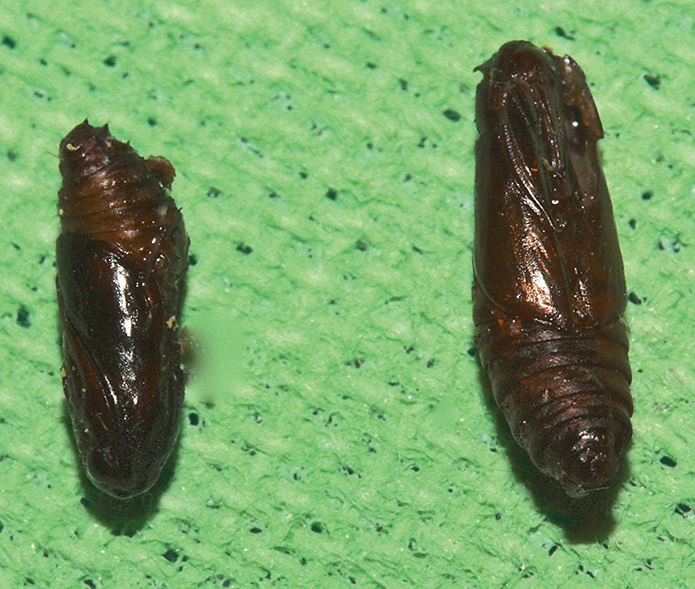
Cassia borer-moth pupae
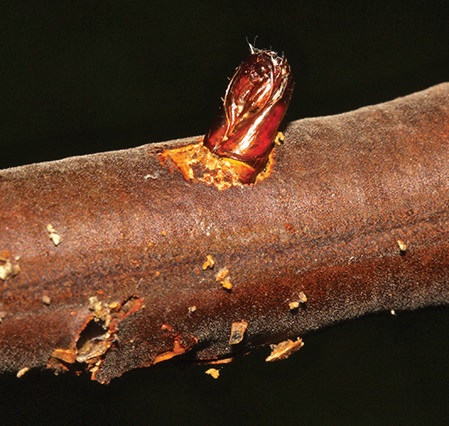
Extruded pupa cassia seed pod
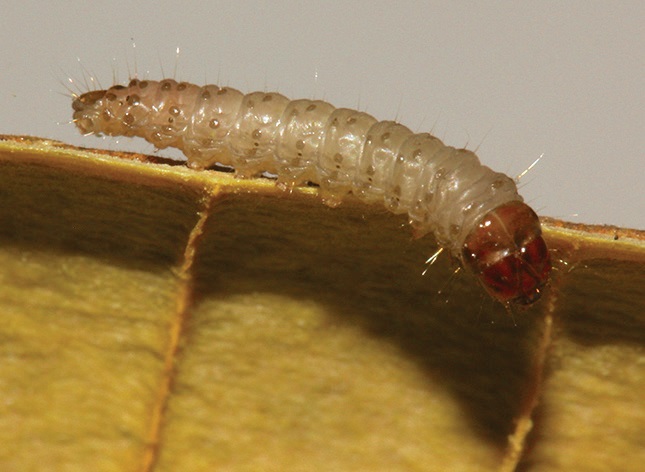
Cassia borer-moth larva
